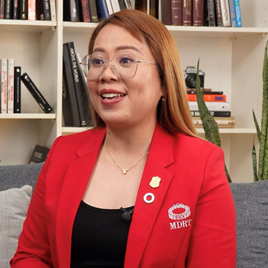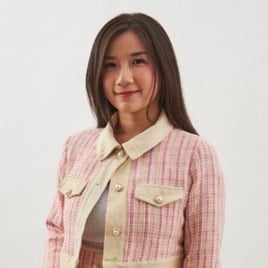Jan 03 2023 / Round the Table Magazine
The future is already here
Topics Covered
Carla Brown, FPFS, doesn’t have a reservation about what could happen if she sells her practice to a larger company. She has several:
- The clients wouldn’t retain the same level of service they have now.
- A buyer wouldn’t even exist for a company of her size (850 clients, mostly pre-retirement business owners).
- She would have to stay on longer than she hopes to.
- The culture change would be difficult after being her own boss for the last 11 years.
That’s why the five-year MDRT member from Cuddington, England, UK, has been working to develop a successor from within her practice (which includes herself, two advisors, an operations manager and six support staff) rather than entrusting her clients and business to someone externally. In fact, when Brown looked to bring in new advisors 18 months ago, she made it clear during interviews that she was seeking candidates who wanted to be business owners in the future.
“It did scare some people off,” Brown said. “Right now, they’re very much still in the learning process of how to do the job here, and I’m hoping in two to three years’ time they’ll be ready to take an equity stake in the business, so I can take a bit of risk off the table and reduce my responsibility.”
Offering that future potential is a way to attract stronger talent, says Mark B. Coutts, MBA, CFP. But the 23-year MDRT member from Toronto, Ontario, Canada, also has seen how it takes time to accurately assess a person’s performance and their long-term fit for the practice.
Staying power
After two hires lasted less than a year when they didn’t demonstrate the required commitment to the role, Coutts found two advisors with staying power — Laura, who has now worked with him for nine years, and Kelly, who has been around for four. They weren’t hired initially to become his successors but have established themselves as just that. In the first few months, Laura showed her dedication by not complaining even when driving a long way to a client in a car without air conditioning on a hot summer day — and spending extra hours on financial plans to devise meaningful solutions.
After six months, she told Coutts, “Mark, I think I’ve got it,” and 18 months later, she was promoted to senior financial planner.
“Ideally, succession is not a transaction but an evolution,” said Coutts, who is now contemplating his retirement timing and whose holistic financial planning practice includes three advisors, three administrators and an office manager serving 500 households of professionals and business owners. “Over several years, we’ve been almost unconsciously transitioning the business, so my involvement is required less and less.”
Ideally, succession is not a transaction but an evolution.
–Mark Coutts
Coutts — who says advisors who own their practice shouldn’t assume an associate advisor wants to be in your shoes and should understand their long-term goals sooner than later — and Laura started the conversation about a timeline for succession five years ago. He also began showing her the numbers behind how the business runs and involved her as an observer in management decisions.
“The more authority and responsibility I have given Laura, the more she has felt valued and empowered,” Coutts said. “If you have someone who is on the fence about a long-term commitment to the business and you think they’ve got the right stuff, let them know. That might be the missing piece they need to mentally commit to you and your team when they understand the reward at the end of the day. Don’t assume they know.”
Complementary differences
Kelly joined the practice four years ago while Laura was on maternity leave. She followed a similar trajectory. Kelly is more effusive, compared to Laura being more intellectual, and happily takes on even the most difficult phone calls on the occasion a client is unsatisfied. Within three years, Coutts talked to Kelly about her future potential. Now he has not only two successors in place but three advisors with whom to match clients based on their personalities. Over time, clients became less insistent about working with him.
“We’ve made every client a joint client with myself and either Laura or Kelly, so we’ve taken my existing block and already on paper split it in two,” Coutts said. “I’ve been able to step back significantly from day to day to focus on big-picture stuff to lead the orchestra as opposed to playing all the instruments.
“It’s no different than the planning we do with clients. As advisors, we owe it to ourselves and our clients to think where we want the business to be in five, 10, 20 years, and not just what we have to do to get there but who we need on the team to help us along that journey.”
For Coutts, that journey included spending four weeks away at his cottage over the summer for the first time ever. Brown also wants to travel — specifically to help street kids in places like Cambodia, Vietnam and Laos who are desperate for someone to spend time with them.
For now, though, Brown is starting to involve her potential successors (who each have 200 of the practice’s clients) in leadership development, having them sit in management meetings and giving them more responsibility to think about elements like cost structure, client experience and HR. While evaluating their ability to manage clients — including understanding the importance of responding to emails in a timely manner — she’s also tasked them both with devising a 12-month marketing plan, including research, cost analysis and more.
“This is the first step in taking ownership of owning a business before we look to give them more responsibility across the business as a whole,” said Brown, who hasn’t yet discussed ownership split yet with her employees. “Hopefully through this exercise we can see where any skills are lacking and develop a more targeted approach.”



![A former flight attendant's sky-high client servicing standards [Beth Daffodil Uy Tan]](https://www.mdrt.org/globalassets/digizuite/32577-en-ph-_video-interview_a-former-flight-attendant's-sky-high-client-servicing-standards_daffodil-tan-thumbnail.png?height=268&crop=0,0,268,268)

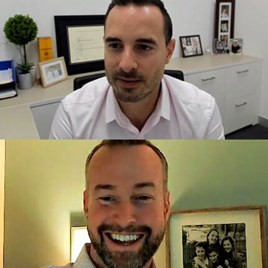
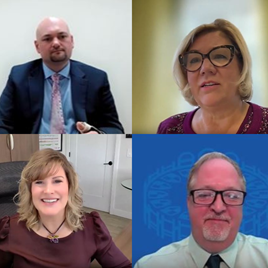
![Overcoming a financial advisor’s internal self-doubts [Cedrick Cruz]](https://www.mdrt.org/globalassets/digizuite/32509-en-ph_written-interview_-handling-a-financial-advisors-self-doubts-cedrick-cruz-thumbnail.jpg?height=268&crop=0,0,268,268)
![Why negative feedback is not a setback [Ella Grace Nuguid]](https://www.mdrt.org/globalassets/digizuite/32508-en-ph_written-interview_-turning-negative-feedback-into-opportunities-and-motivation_-ella-nuguid-thumbnail.jpg?height=268&crop=0,0,268,268)
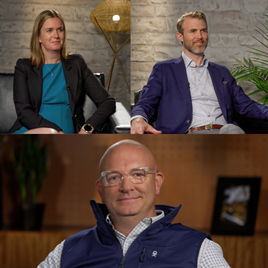
![Financial advisor on-call: Strategies for engaging doctors [Mardeo Vellon]](https://www.mdrt.org/globalassets/digizuite/32490-en-ph_written-interview_-financial-advisor-on-call_strategies-for-engaging-doctors-_-mardeo-vellon-thumbnail.png?height=268&crop=0,0,268,268)
![Women and Wealth: Empowering women toward financial independence [Jennelaine Dingalan]](https://www.mdrt.org/globalassets/digizuite/32488-en-ph_written-article_-women-and-wealth_-empowering-women-toward-financial-independence_jennelaine-dingalan-thumbnail.png?height=268&crop=0,0,268,268)
![Mastering the digital frontier of financial advisory for clients above 50 [David Ooi]](https://www.mdrt.org/globalassets/digizuite/32487-en-my_written_interview_mastering-the-digital-frontier-of-financial-advisory-for-clients-above-50-thumbnail.png?height=268&crop=0,0,268,268)
